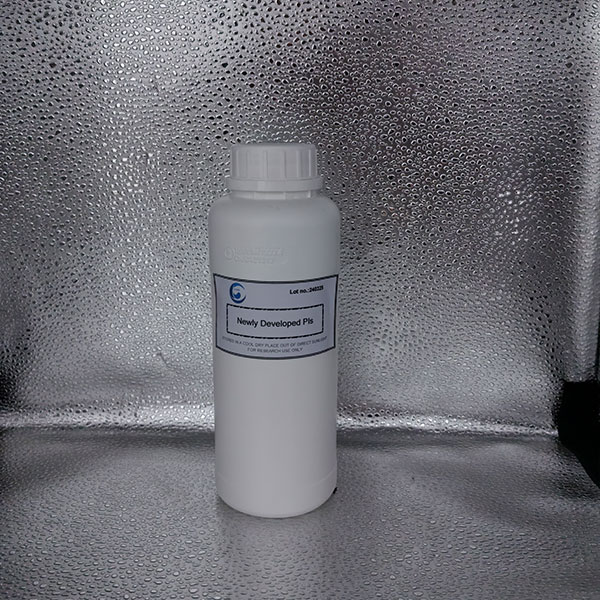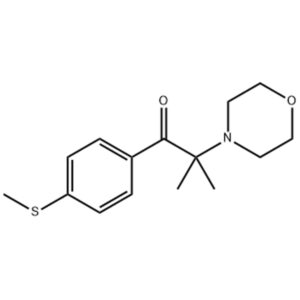Description
Photoinitiator 754
Chemical Name: Mixture of Oxy-phenyl-acetic acid 2-[2-oxo-2-phenyl-acetoxy-ethoxy]-ethyl ester and Oxy-phenyl-acetic acid 2-[2-hydroxy-ethoxy]-ethyl ester
Synonym: Photoinitiator 754 ; Omnirad 754
CAS No.: 211510-16-6 & 442536-99-4
Standard:
| Item | Spec |
| Appearance | Light yellow liquid |
| Melting point | < -22 °C |
| Specific gravity (water = 1) | 1.2 |
| UV/VIS Absorption peaks(nm) in methanol | 255,325 |
| Viscosity | 84mPa s(20℃) |
| Assay | ≥95.0% |
| Volatiles | <0.5 |
| Transmittance | 425nm , ≥40.0 |
| 450nm , ≥40.0 | |
| 500nm , ≥40.0 | |
| Clarity | Transparent solution, no suspended matter |
Function & Applications:
The 754 is the obvious choice when residual odors need to be kept to an absolute minimum, emissions need to be as low as possible, and the degree of yellowing after curing needs to be strictly limited. There is a good reason for this: from an environmental perspective, low residual odors and emissions are in line with modern environmental protection concepts, especially in products related to indoor environments, such as home decoration, which can effectively reduce air pollution and protect the health of users. From the perspective of product aesthetics and quality, low yellowing after curing ensures the stability of the product’s appearance over time. In the case of some high-end wooden furniture, yellowing not only affects the appearance, but may also reduce its value.
This amazing 754 excels in traditional UV curing formulations, and it is like a key tailored for UV curing. It is worth mentioning that 754 is extremely flexible in formulation applications. It can either stand alone and function as the only photoinitiator, or it can work in synergy with other photoinitiators. When combined with other photoinitiators, it is like forming a super team that can better meet diverse needs by enhancing specific properties such as curing effects and reactivity.
The potential application fields of 754 are truly diverse. Take PVC floor varnish as an example. PVC floors are widely used in modern buildings, both in commercial premises and domestic environments, and they require a layer of high-quality varnish to protect them. 754 is used here to not only keep the floor looking good over the long term, but also to withstand daily friction and trampling.
Let’s take a look at the finish for parquet flooring. Wood flooring has always been a favorite for high-end decoration, but wood is susceptible to external environmental influences. Historically, the wood floors in some ancient palaces have decayed and discolored over time due to a lack of effective protective measures. Today, with the help of 754, parquet flooring can withstand the erosion of time and maintain its gorgeous appearance.
In the field of plastic coatings, the application of 754 involves every aspect of our lives. Take CDs and mobile phones as an example. CDs need to remain smooth and stable during the reading process, while the mobile phone shell needs to withstand daily wear and tear and ultraviolet radiation. According to relevant research, plastic coatings using 754 have improved wear resistance and ultraviolet resistance by about 30% compared to ordinary coatings, which undoubtedly greatly extends the service life of the product.
For wooden furniture, its importance is self-evident. From classical Ming and Qing furniture to modern minimalist wooden tables and chairs, protecting wooden furniture has always been an important issue. The application of 754 provides better protection for wooden furniture, enabling it to last longer.
In addition, 754 also has excellent performance in terms of UV curing and UV stabilization. In the treatment of some outdoor facilities or materials that are sensitive to UV light, 754 is like an invisible protective umbrella, ensuring that the materials remain stable and reliable under long-term UV exposure.
Potential applications for 754 are:
- clear coats for PVCfloors,
- top coats for woodparquets,
- plastic coatings in general (Compact Discs, cellular phones,),
- woodfurniture,
- UV-curable UV-stabilized
Recommended Addition levels
The amount of 754 as supplied required for optimum performance should be determined in trials covering a concentration range :
film thickness 5 – 20 µm 2 – 4 %
film thickness 20 – 200 µm 1 – 3 %
Packaging and Shipping:
Packing:20kg/carton box.
Delivery:with in 5-7 working days.
Storage:
Stored in a cool dry place out of direct sunlight.
Contact Us Now!
If you need Price, please fill in your contact information in the form below, we will usually contact you within 24 hours. You could also email me info@longchangchemical.com during working hours ( 8:30 am to 6:00 pm UTC+8 Mon.~Sat. ) or use the website live chat to get prompt reply.






Reviews
There are no reviews yet.